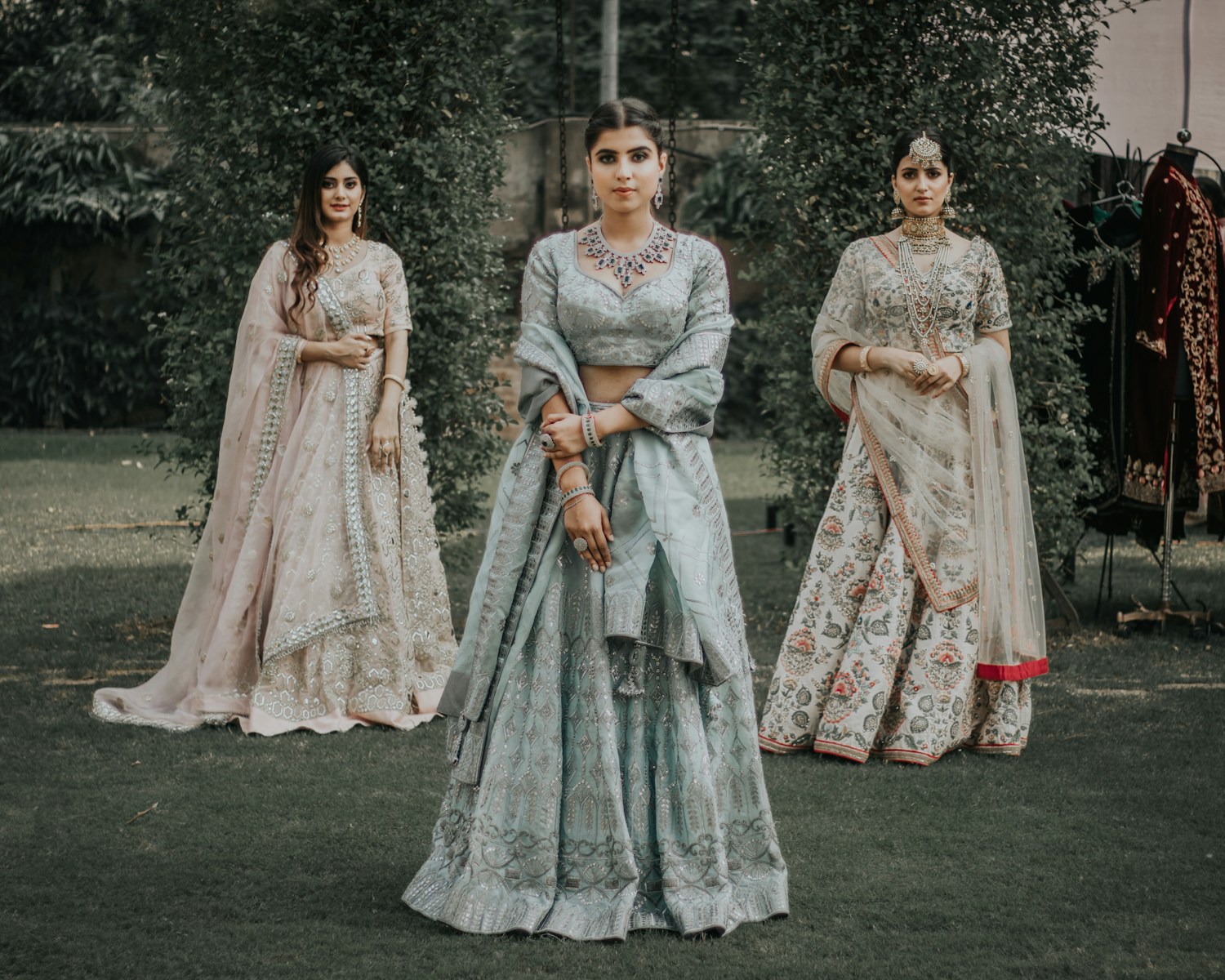Cultural Influence on Fashion: An Exploration of Style, Identity and Heritage
Fashion is an art form that transcends geographical and cultural boundaries. It allows people to express themselves through the clothes they wear. The garments we choose to don are a reflection of our identity and cultural heritage. They tell stories of our history, our social norms, and our values. This diversity of cultural influences is what makes fashion so fascinating.
It is a symphony of colors, textures, and styles that reflects the cultural tapestry of our world. From the intricate patterns of Indian saris to the sleek minimalism of Scandinavian design, fashion is an ever-evolving amalgamation of traditional and contemporary styles. This constant exchange of ideas and inspiration between cultures is what fuels innovation within the global fashion industry.
Cultural clothing is a form of attire that reflects the historical and social experiences of a particular community. These garments are not just clothing, but they are symbolic of the cultural values, beliefs, and traditions that have been passed down from generation to generation. For instance, the Japanese kimono, the Scottish kilt, and the Indian sari are all traditional garments that carry significant cultural meanings and stories.
They are a representation of their respective cultures’ artistic expressions, ancestral wisdom, and unique identities. Each piece of cultural clothing tells a unique story of its origins, functions, and evolution over time. These garments are a reflection of diversity, and they serve as a reminder of the rich cultural heritage that exists in the world.
Indian clothing is a magnificent expression of the country’s profound cultural diversity. The country’s traditional attire is a testament to its rich tapestry of traditions, from the ornate embroidery of a Punjabi salwar kameez to the delicate drapery of a Bengali saree. The influence of fashion in India is profound, as traditional clothing is continuously adapted to meet contemporary tastes without losing its cultural significance. Indian clothing is a fusion of the country’s history, culture, and current trends, resulting in a vibrant and dynamic fashion scene. The intricate designs, vibrant colors, and unique fabrics used in traditional Indian clothing reflect the country’s diverse history and cultural heritage, making it a source of pride and identity for many Indians.
The Role Of Globalization in Fashion

In today’s interconnected world, fashion is influenced by diverse cultures more than ever before. Globalization has made it possible for fashion trends to cross borders, leading to a fusion of different styles. Western fashion houses have been particularly impacted by this trend and have often taken inspiration from traditional garments and motifs from around the world.
This has resulted in a mix of cultural styles that sometimes borders on appropriation. While some argue that this has helped to bring international recognition to cultural styles, others point out the controversies surrounding cultural appropriation that can arise. As a result, the fashion industry has become a hotbed of debate when it comes to the balance between appreciation and appropriation of cultures.
Fashion shows play a crucial role in this global exchange of ideas. They are platforms where cultural clothing is celebrated and reinterpreted by designers from different backgrounds. For instance, a fashion show in Paris or Milan might showcase a collection that features African prints or South Asian embroidery, highlighting the global nature of contemporary fashion.
Sustainability and Ethical Considerations
The fashion industry has been under increasing scrutiny in recent years, as concerns about its environmental impact and the ethical implications of cultural exchange have come to light. As a result, there is now a growing movement towards sustainable fashion, which aims to respect both the environment and the cultural origins of clothing styles.
Sustainable fashion is founded on the principles of ethical fashion, which advocates for the responsible sourcing of materials and promotes fair trade practices. This means that companies must ensure that the materials they use are produced in a way that minimizes harm to the environment, and that workers involved in the production process are treated fairly and compensated adequately for their skills and craftsmanship.
In addition to these environmental and ethical considerations, sustainable fashion also emphasizes the importance of designing clothing that is durable and long-lasting, as well as easily recyclable or biodegradable. By doing so, the industry can reduce its reliance on fast fashion, which often results in the production of low-quality clothing that is quickly discarded and contributes to the growing problem of textile waste.
Overall, sustainable fashion represents a shift towards a more responsible and conscious approach to clothing production and consumption, as well as a recognition of the need to balance our desire for fashion with our responsibility to protect the planet and respect the people who make our clothes.
This shift towards sustainability is also influencing new styles of dresses and garments. Designers are increasingly turning to eco-friendly materials and traditional techniques that not only reduce the environmental footprint but also enhance the cultural value of their creations. For example, using organic cotton for Indian clothing not only supports sustainable agriculture in India but also maintains the authenticity and quality of traditional garments.
Cultural Revival through Fashion
Fashion is a dynamic field that encompasses not only the latest trends but also the revival of traditional garments. In recent times, there has been a growing interest in cultural clothing as a symbol of pride and identity. This movement is being led by young designers who are reimagining traditional wear for the modern age, adding a touch of innovation and creativity to it.

Fashion has played a significant role in reviving cultural heritage, as seen in initiatives that promote the wearing of national or traditional dresses on specific days or at public events. These initiatives serve as a means to educate the public about the significance and beauty of cultural clothing, fostering a sense of pride and unity among community members. By reviving traditional garments, fashion has helped to preserve cultural heritage, passing it down from one generation to the next.
The Future of Cultural Influence in Fashion
Fashion has always been heavily influenced by culture, and this trend shows no signs of slowing down. In fact, as consumers become increasingly aware of the stories behind their clothing, there is a growing demand for fashion that not only reflects individual identities but also embraces cultural heritage. The future of fashion lies in its ability to promote diversity, respect cultural origins, and prioritize sustainability.

The fashion industry is now being challenged to create and promote fashion that is not only aesthetically pleasing but also socially responsible. Consumers are demanding more transparency and accountability from brands, and they want to know the stories behind their clothing. The fashion industry must embrace cultural influences, celebrate diversity, and promote sustainability to stay relevant in the modern world.
Conclusion
The relationship between fashion and culture is a complex and intricate one, with both influencing and enriching the other in numerous ways. Fashion has always been a way to express oneself and showcase individuality, but it also has a deep connection with cultural legacies and traditions. As we witness the evolution of cultural clothing into new styles of dresses and other garments, it is essential to approach fashion with a sense of respect and responsibility towards the cultures it represents.
Fashion has been a tool for cultural preservation, with traditional garments and textiles being passed down through generations, each with its unique story and symbolism. When we wear these garments, we not only showcase their beauty but also celebrate the culture and history they represent. However, fashion can also be a source of cultural appropriation and disrespect when people wear traditional garments without understanding their significance or context.
As our world becomes increasingly globalized, it is more important than ever to approach fashion with sensitivity and understanding. By embracing diverse cultural fashion, we not only celebrate the beauty of different cultures but also promote cultural exchange and understanding. In essence, fashion becomes a powerful tool for cultural preservation and understanding, allowing us to appreciate and respect the diversity of our world while showcasing our unique individuality.

